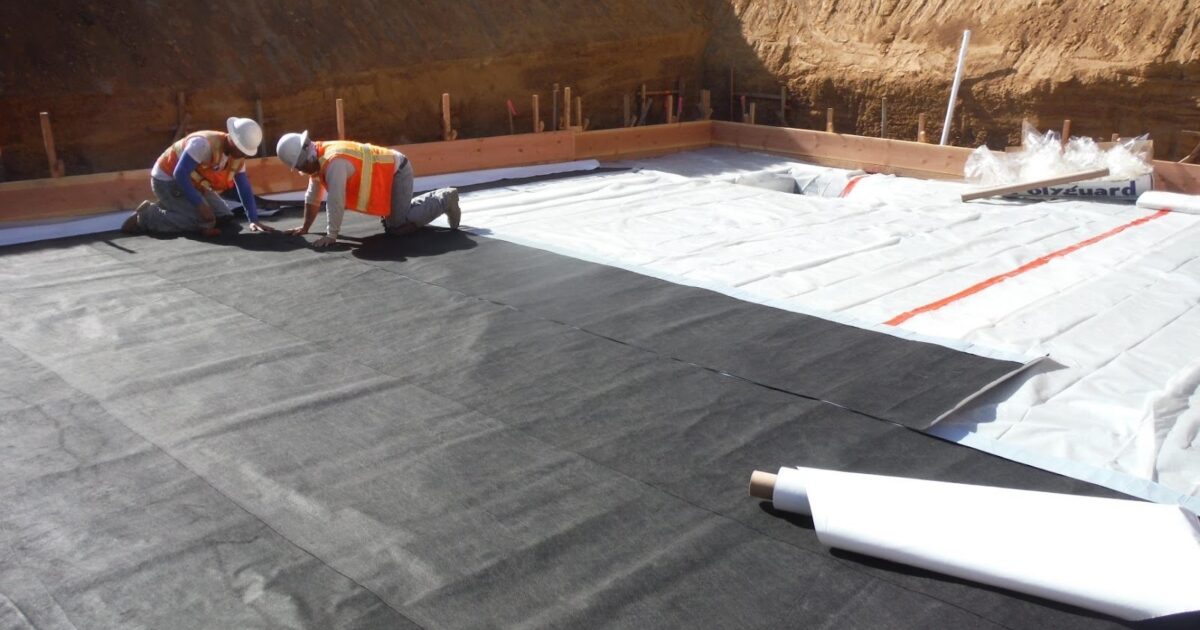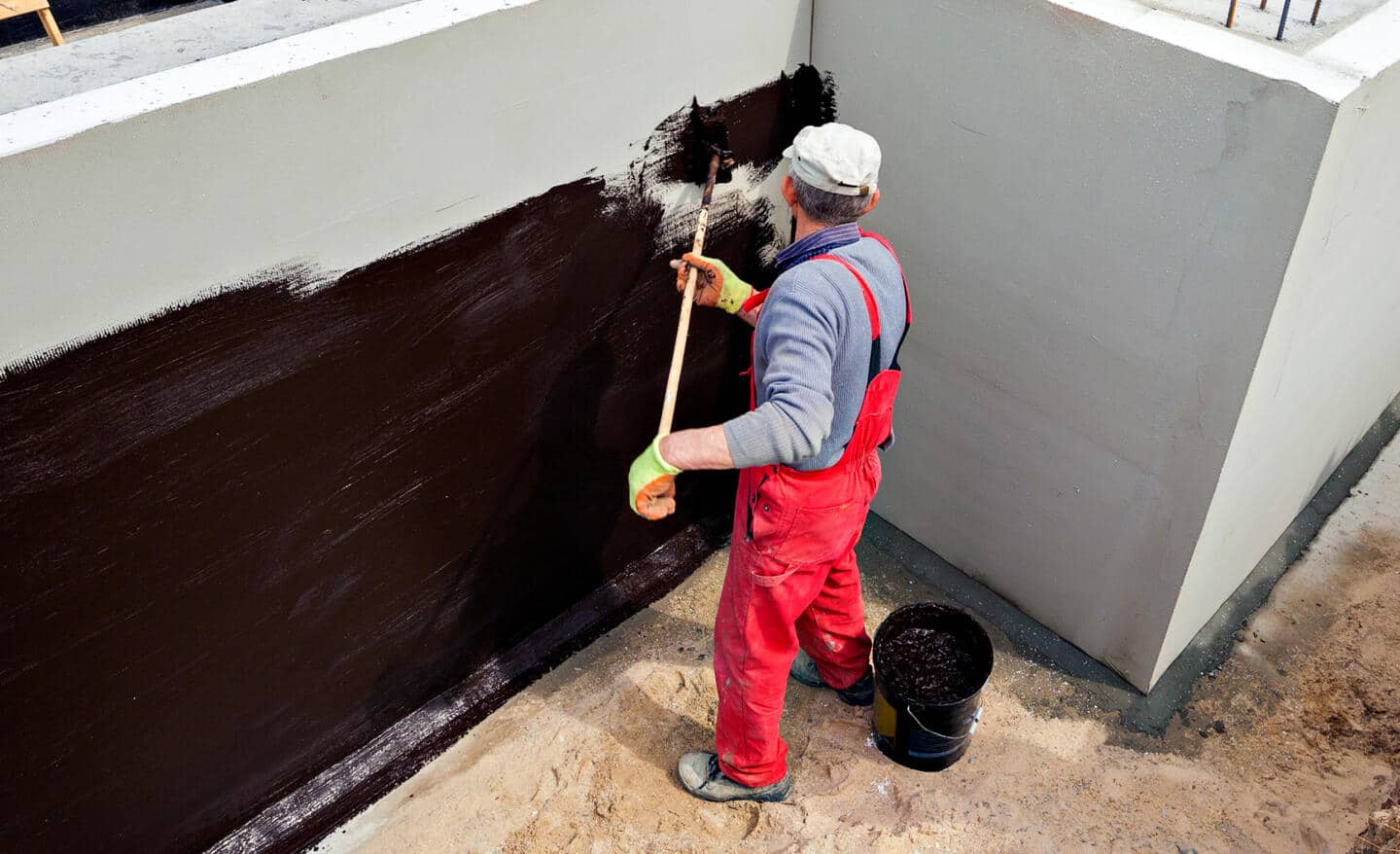The Risks of Ignoring Water Solutions in Your Home
Wiki Article
Why Waterproofing Is Critical for Resilient Structures: an Extensive Analysis
Waterproofing plays a vital function in the durability of structures. It acts as a barrier against wetness, which can cause substantial problems like mold and mildew and deterioration. Understanding the different waterproofing methods and their ramifications is vital for homeowner. The repercussions of overlooking this element can be extreme. Exploring these elements exposes not simply the need of waterproofing, but additionally its broader impact on home worth and safety.Comprehending Waterproofing: Meaning and Relevance
Waterproofing functions as an important barrier versus wetness breach, securing frameworks from potential damages. It encompasses different techniques and materials designed to stop water infiltration into buildings, making certain durability and performance. The relevance of waterproofing can not be overemphasized, as it shields against a variety of problems, consisting of mold development, damage of materials, and architectural weakening.Effective waterproofing solutions can include membranes, finishings, and sealants, each tailored to specific settings and structural styles. By creating a protective layer, these solutions help keep a completely dry interior, which is important for the wellness of passengers and the conservation of building value.Moreover, investing in waterproofing at the construction phase is substantially extra economical than dealing with water-related problems after they arise. Comprehending the concepts of waterproofing is essential for engineers, home builders, and property owners aiming for sturdy, resistant structures that endure the test of time and environmental difficulties.
The Impact of Water Damage on Structural Integrity
Water damage positions significant threats to architectural stability, primarily via the growth of mold and mildew and mold. These organisms not just jeopardize interior air high quality however likewise result in product degradation with time. Furthermore, long term direct exposure to moisture can damage architectural components, boosting the likelihood of collapse or failing.Mold and Mildew Growth
Wetness breach positions a significant hazard to the structural honesty of structures, leading to the expansion of mold and mold. These fungis flourish in wet environments, frequently settling in hidden areas such as wall surface tooth cavities, under flooring, and in ceilings. Their growth not only develops unpleasant spots and undesirable smells however also contributes to a decline in interior air quality, presenting health and wellness dangers to occupants. Mold and mildew and mold can compromise materials like timber and drywall, resulting in additional dampness retention and creating a cycle of damage. Early detection and remediation are necessary to protect against substantial growth, emphasizing the requirement of efficient waterproofing procedures. Dealing with moisture problems without delay can shield both the health of citizens and the longevity of the framework.Structural Weakening Risks
Unchecked wetness invasion can lead to severe architectural weakening, jeopardizing the stability of structures. Water damages typically influences fundamental parts, such as beams, columns, and walls, resulting in compromised load-bearing ability. Extended exposure to dampness can trigger products like timber to rot and steel to wear away, deteriorating their structural residential or commercial properties. This wear and tear may lead to splits, bowing, and even catastrophic failings if left unaddressed. Basement waterproofing Omaha. In addition, water infiltration can threaten the dirt beneath structures, causing settling or shifting that more intensifies structural risks. Because of this, applying effective waterproofing options is important in protecting a building's structural stability, preventing expensive repair services, and ensuring safety and security for owners. Proper maintenance and aggressive actions are vital in minimizing these considerable dangers connected with water damageKinds of Waterproofing Techniques and Products
Waterproofing methods and materials play an essential duty in safeguarding frameworks from water damage. Key techniques include membrane waterproofing, which provides a physical obstacle; liquid waterproofing options that form a smooth coat; and cementitious waterproofing choices known for their durability and convenience of application. Understanding these various approaches is essential for picking one of the most appropriate method for certain construction requirements.Membrane Layer Waterproofing Strategies
Membrane waterproofing techniques are vital for shielding structures from the destructive effects of water seepage. These approaches include the application of waterproof membrane layers that create a barrier versus dampness. Both key types of membrane layer systems are sheet membranes and liquid-applied membrane layers. Sheet membranes, normally made from materials such as rubberized asphalt or polycarbonate, are built and can be presented and stuck to surfaces. In comparison, liquid-applied membrane layers are applied as a fluid and cure to form a smooth layer. Both kinds offer versatility and resilience, providing to different applications, consisting of roofing systems, basements, and foundations. Correct installment and upkeep of these membranes guarantee lasting protection, boosting the life expectancy and integrity of the frameworks they guard.Liquid Waterproofing Solutions
Liquid waterproofing options stand for a functional option to typical membrane layer systems. These solutions normally include the application of liquid coatings that heal to form a smooth, long lasting barrier versus water seepage. Different kinds of fluid waterproofing products are readily available, consisting of polyurethane, bitumen, and acrylic-based formulas. Each type supplies special residential or commercial properties, such as versatility, adhesion, and UV Continue resistance, making them Visit Website appropriate for diverse applications. The application procedure usually includes spraying or rolling the fluid onto surfaces, enabling insurance coverage of intricate shapes and information, which decreases possible weak factors. Liquid waterproofing services are particularly advantageous for locations with motion, such as joints and cracks, as they can fit architectural changes without endangering honesty, ensuring long-lasting protection for structures.
Cementitious Waterproofing Options
Numerous cementitious waterproofing options are available, providing reliable services for different construction requirements. These systems typically contain a mix of concrete, sand, and ingredients, making them suitable for both exterior and interior applications. Among the preferred choices are crystalline waterproofing items, which react with dampness to form a waterproof barrier within the concrete matrix. In addition, versatile cementitious layers provide enhanced flexibility, suiting minor structural activities without jeopardizing the waterproofing stability. It is additionally usual to make use of cementitious sealants for joints and splits, guaranteeing detailed security against water infiltration. Overall, cementitious waterproofing choices are valued for their durability, simplicity of application, and compatibility with various substratums, making them a favored choice in modern construction methods.Long-Term Expense Financial Savings Via Efficient Waterproofing
Investing in efficient waterproofing remedies can significantly decrease long-lasting costs for structure owners and programmers. By avoiding water invasion, these options reduce damage to architectural elements, minimizing the demand for expensive repair work and upkeep with time. Waterproofing additionally secures indoor surfaces and home furnishings, lessening replacement expenses and improving the total lifespan of the property.Moreover, effective waterproofing can lead to energy cost savings by enhancing insulation and minimizing humidity-related problems. This causes reduced home heating and cooling costs, contributing to an extra sustainable financial version for building management.Additionally, the implementation of waterproofing steps can boost building value by making certain a completely dry, safe, and durable environment. While the preliminary investment in waterproofing may seem significant, the long-term monetary benefits far surpass the ahead of time costs, making it a sensible decision for anybody included in construction or building monitoring.
The Role of Waterproofing in Building Regulations and Rules
Waterproofing plays a substantial role in building regulations and laws, mirroring its value in modern construction methods. These codes are made to assure safety and security, resilience, and sustainability in structures, stressing the requirement for efficient waterproofing measures. Various nationwide and local building ordinance detail particular needs for waterproofing products and strategies, specifically in areas susceptible to water invasion, such as basements and foundations.Compliance with these policies not only protects frameworks from moisture-related damages but additionally safeguards public wellness by protecting against mold development and architectural instability. Assessors frequently examine waterproofing components during the construction process to ensure check over here adherence to established standards. As environment modification increases the regularity of severe weather events, the duty of waterproofing in structure codes is anticipated to advance, possibly resulting in more stringent laws. Overall, the combination of waterproofing in governing structures underscores its crucial role in accomplishing resilient, resilient frameworks.Instance Studies: Effective Waterproofing Solutions
Successful waterproofing options have been implemented across numerous jobs, showcasing ingenious strategies that enhance architectural honesty and durability. One significant example is the remodelling of the historical Smith Tower in Seattle, where innovative membrane layer systems were utilized to protect the framework from water invasion. This approach not only protected the structure's visual however likewise expanded its lifespan.In one more situation, a huge commercial building in Miami used crystalline waterproofing innovation, which reacts with wetness to develop an obstacle versus water. This service verified reliable versus the city's high humidity and hefty rainfall.Additionally, a bridge in San Francisco undertook a considerable waterproofing treatment using epoxy coverings, which greatly reduced maintenance prices and enhanced toughness. These case studies highlight the efficiency of tailored waterproofing approaches in diverse environments, emphasizing the relevance of choosing suitable methods to address certain challenges and assure the long life of frameworks.Ideal Practices for Implementing Waterproofing Strategies
Implementing effective waterproofing approaches calls for careful planning and adherence to best techniques - Sump pump installation & replacement Omaha. It is vital to perform a complete site assessment to identify prospective locations of water ingress. This evaluation notifies the option of proper materials and strategies tailored to details ecological problems. Utilizing high-grade, resilient waterproofing membranes can significantly boost protection against moisture.Additionally, correct setup techniques are crucial; guaranteeing that surface areas are tidy and without pollutants advertises suitable bond. Routine maintenance checks need to be scheduled to determine any type of signs of wear or damage, enabling prompt repairs.Moreover, incorporating drain systems can effectively manage water runoff, avoiding build-up around frameworks. Enlightening all workers associated with building regarding waterproofing requirements additional warranties uniformity and adherence to ideal methods. Eventually, a positive approach to waterproofing can greatly expand the life expectancy of frameworks and reduce lasting maintenance costsFrequently Asked Inquiries
How Does Waterproofing Affect Power Efficiency in Buildings?
Waterproofing considerably improves energy effectiveness in buildings by protecting against dampness intrusion. This minimizes the demand for heating & cooling, preserves regular interior temperature levels, and inevitably reduces energy usage, contributing to long-term sustainability and price financial savings.Can Waterproofing Be Applied to Existing Frameworks?
Waterproofing can indeed be put on existing structures. Different methods, such as membrane layers, coatings, and sealers, enable building owners to improve defense against dampness, thereby extending the structure's integrity and lowering potential damage with time.What Are the Indicators of Inadequate Waterproofing?
Indicators of poor waterproofing include water stains on wall surfaces, mold development, peeling off paint, mildewy odors, and dampness in cellars - Drainage & waterproofing company Omaha. These indicators suggest possible architectural damages and the demand for immediate interest to protect against further deteriorationJust How Typically Should Waterproofing Be Evaluated or Maintained?
Waterproofing must be checked at the very least every year, specifically in areas with heavy rains or fluctuating temperatures. Routine maintenance warranties very early detection of concerns, advertising architectural stability and prolonging the life expectancy of the building.Are There Eco-Friendly Waterproofing Options Available?
Environment-friendly waterproofing options are significantly readily available, utilizing lasting materials such as bio-based polymers and all-natural sealers. These alternatives not just secure frameworks however additionally decrease environmental influence, appealing to ecologically aware building contractors and building owners.Report this wiki page